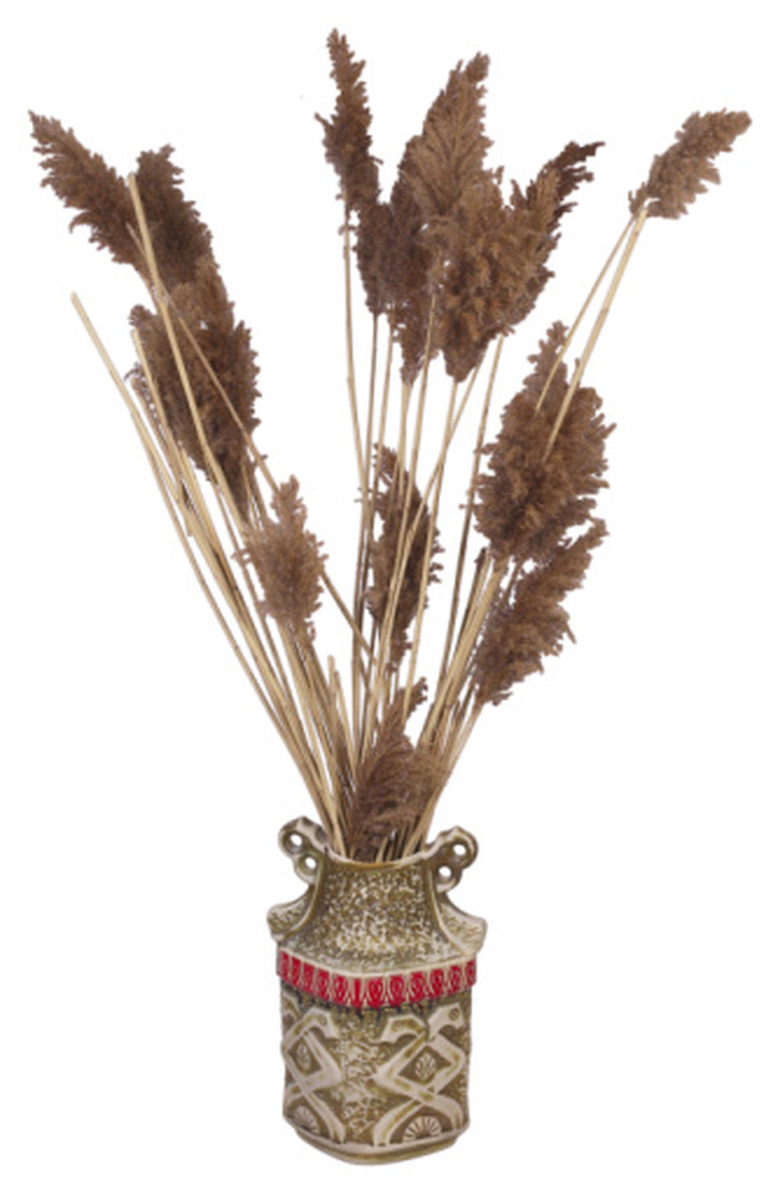How To Decorate With Cattails
Cattails are tall, thin plants that grow in the wild, particularly near water. Gather wild cattails and hang them upside down for a couple weeks to dry out, or purchase pre-dried or silk cattails to decorate your home. Cattails work year-round or to bring nature inside, and look especially attractive during the fall. Cattails work with a country, natural, rustic or quietly elegant decor. The best way to decorate with cattails depends on the rest of your decor, as your cattail arrangement should complement the rest of the room.
Step 1
Lay a group of dried cattails in a worn, shallow basket. Tie string or raffia around the stems of the cattails to hold them together in a decorative and rustic way. Put the basket on an old-looking stone or brick fireplace, under a sofa table behind your sofa or near your entryway or next to the sofa on the floor.
- Cattails are tall, thin plants that grow in the wild, particularly near water.
- Tie string or raffia around the stems of the cattails to hold them together in a decorative and rustic way.
Step 2
Place a few dried cattails in a decorative floor vase that complements your decor. Place the vase in an empty corner on your stairway, in your entryway or in any empty corner that's not in the way of any walking path.
Step 3
Tie a decorative ribbon around a few cattails with the top of the plants spread out. Hang the cattail bunch above a fireplace or over the sofa for a rustic look.
Step 4
Use other pieces from nature to tie the cattails into your decor, such as other dried grasses or gourds, wheat and dried corn during fall. Alternatively, weave other browns and greens throughout the room to tie the colors together.
Care Of Cattails
Cattails can withstand periods of partial shade, but require full sunlight for the best results, soaking up eight hours or more per day. Providing cattails with a low phosphorus balanced fertilizer will provide them with the macronutrients they need, including nitrogen and potassium as well as several micronutrients, such as calcium, copper and molybdenum. A low phosphorus fertilizer can also help prevent excess phosphorus — which can spur harmful algae blooms — from escaping into the water feature. The area near a large landscape pond or water garden is ideal for cattails, since they thrive in consistently moist soil. A cattail can tolerate short periods of dryness, but may suffer damage during long droughts. Too much wetness is also a danger, since immersing the plant in water that is too deep can cut the lower parts off from the sun and even suffocate the root system. Keeping cattails in water that is about 12 inches deep will ensure enough sunlight gets to the lower parts of the plant. Cattails feature a deep and extensive root system that is hard to remove entirely.
- Place a few dried cattails in a decorative floor vase that complements your decor.
- Use other pieces from nature to tie the cattails into your decor, such as other dried grasses or gourds, wheat and dried corn during fall.
Things Needed
- Basket or vase
- Ribbon, twine or raffia
